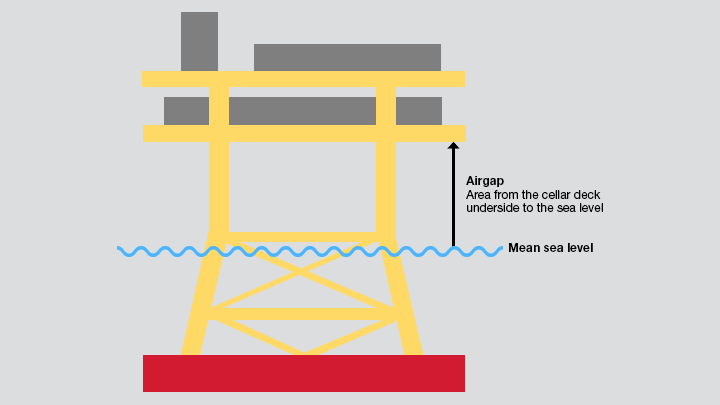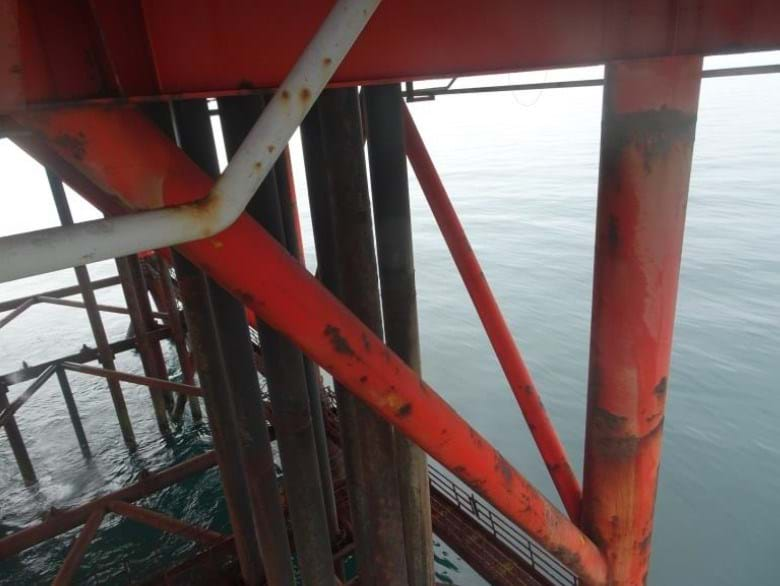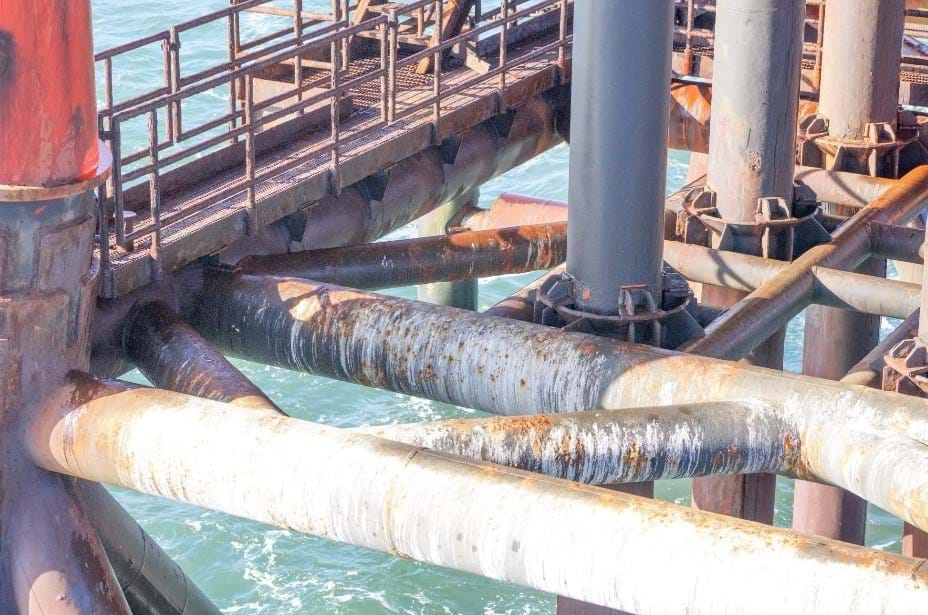Drones: The End of the Rope?

Adopting new technologies in a hesitant inspection industry
PROCESS industries throughout the world need to be aware and willing, where practical, to embrace new technology and modern techniques. Nothing can replace experience, skill and knowledge. However, using high specification technology alongside skilled personnel can bring added benefits, cost-savings and higher-quality results once challenges and risks have been overcome. One such technology that has shown positive benefits in offshore environments is the use of drones.
Over the past few years, drone technology has started to make an impact in a number of sectors. Although there have been some negative responses to flying cameras, in the main, this kind of assisted filming technology has the ability to outperform some manual processes.
The offshore industry is closely controlled and managed through regulation and via the standards imposed by individual companies. As a result the industry can be slow to embrace new technologies which in many cases, if appropriately controlled, could offer time, cost and risk-savings on a number of levels.
Why drones?
Inspections on gas platforms are vital. But they can also be dangerous, costly and in some cases, extremely time consuming. Take, for example, the airgap inspection. This space between the underdeck and the surface of the sea (see Figure 1) is a remote section of an offshore platform. Inspecting it can be challenging, with corroded access impeding the rope team, the vagaries of the weather stopping the inspection, and the ongoing risk to personnel who are conducting the role underneath the platform.
Airgap inspections have sometimes been given lower priority by operators and are squeezed into the inspection schedule during times of the year where the weather, the sea state and the hours of darkness make it extremely dangerous for the inspection team who are required to complete the task while hanging by ropes.

Structural inspections by drones makes both economic and health and safety sense. Drones have already been deployed in dangerous environments for a while now, including collapsed buildings, search and rescue, and in areas of high risk or low visibility such as explosions and decommissioning.
Using this knowledge and experience, operators have now used drones successfully in structural inspections offshore. However, changing processes that have been deployed for many years – in this case rope access teams for inspections – can take time. The fear of the unknown and the perceived difficulties in flying drones around such a challenging area must be overcome if the industry is to fully embrace the benefits of this new technology.
Drone inspection vs rope access inspection
So why all this effort? Is drone inspection that much more efficient? Are we sacrificing quality for efficiency?
The biggest safety benefit of using drones is removing the need for personnel on ropes being put at risk in a very exposed area for prolonged periods. Moreover, drone inspection conducted by skilled operators and managed appropriately can lead to very good results, in a much shorter timescale.
Typically a rope access (RA) team comprises four skilled and experienced professionals and requires the use of complex RA techniques and setups to allow full access to the airgap. Drone inspection only requires a team of two, compromising one operator and one inspection engineer to ensure the right areas are inspected. There is limited set up required once the permits are live and barriers erected. Prior to mobilisation you need to carry out due diligence to ensure that the drone operators have the suitable experience for this type of work and that they can achieve the levels of quality required.
While reducing the need for RA inspections, drone inspections within the airgap cannot fully replace all the elements of inspection. Inspecting a platform‘s airgap typically consists of two parts; general visual inspection, and targeted visual inspection (determined through the general visual inspection) and areas requiring non-destructive testing (NDT).
A typical RA airgap inspection would take four weeks (assuming no interruptions), of which two weeks would be general visual inspection, which would then determine the areas requiring close visual inspection, such as areas of corrosion or points of interest.
A drone could complete the same general visual inspection within two days.
This reduction in time also has financial benefits, which are shown in Table 1. The data shown is based on an average-sized platform and presented as cost per day.

We also have to consider the quality of the inspection data, as the primary method for data recording for the general visual inspection is photography. The close access gained through RA allows for the capturing of defects and general condition with the level of quality shown in Figure 2.

Drones can gain similar levels of access as a RA team, and during the flight the inspection engineer has a live feed so that they can direct the pilot. Drones are typically equipped with high-spec cameras which can achieve a level of quality shown in Figure 3.

Both are comparable with no significant difference in photographic quality.
Case study
It’s taken over two years of planning and a lot of hard work on both sides, but ABB and a large offshore operator have successfully completed the inspection of air gaps on two platforms, comprising five jackets, using a drone.
The planning process was thorough and involved multiple meetings with both the senior leadership team and the offshore management operatives to ensure that risks were identified and quantified, mitigated where possible, and that the results expected were both accurate and high quality.
We worked with the client on a number of stages including:
- Presentations from drone operators addressing questions and concerns, such as:
- health and safety – risks to personnel, process and equipment;
- law/regulation – do the current aviation regulations apply and how will they be adhered to?
- operator control – operator skill, drone reliability, line of sight, landing and take off locations; and
- capabilities/limitations – Can it achieve similar results as RA and are there examples of previous work?
- Following on from the presentations, we conducted a risk assessment detailing the likelihood and consequence of a drone crash with the aim of putting the event into a familiar context. It highlighted that:
- a common activity offshore that is perceived as high risk, such as scaffolding and clips, presents much larger dropped objects or impact risk on hydrocarbon pipework resulting in potential rupture; and
- a falling drone would not have the energy to directly rupture a pipe if it fell from the sky.
The operator’s senior leadership team approved the use of drones and the green light was given in principal. However, this was just one of the hurdles to overcome. The offshore installation managers and operations teams also needed to buy into the idea. These offshore professionals understand the platforms and the dangers better than anyone else and thus are rightly sceptical as to the introduction of a new technology and the negative outcome it could potentially have if not controlled properly.
To provide confidence offshore, visits for the drone operators were arranged.
The offshore platform operator’s biggest concerns were;
- Take off/landing locations. These locations are governed by the aviation regulations and therefore have to meet certain standards. The offshore visit allowed the drone operator to inspect the platform and determine suitable locations which all parties were happy with.
- Drone LiPo (lithium polymer) batteries. Use of LiPo batteries offshore has become more controlled in recent years due to events where such batteries have caught fire when pierced, damaged, or an internal circuit fault has occurred. Typically, offshore operators are not willing to take the risk with LiPo batteries onboard unless necessary. To ensure this risk was adequately controlled, the charging and changing of the batteries was restricted to designated areas, with appropriate firefighting equipment available and transportation and charging of the batteries was to be done within fire-proof bags.
- Use of non-intrinsically safe (non-IS) equipment within the airgap. Non-IS equipment can provide an ignition source if a flammable environment occurs. Offshore practice is to carry a personal gas monitor to detect for flammable environments. To overcome this, the drone would initially carry out a fly-by carrying a gas monitor to ensure no flammable environment was present within the airgap prior to the inspection commencing.
Following this visit, it was possible to create a plan and a permit that were both robust and allowed the drone inspection to proceed with confidence that the risks were appropriately mitigated and controlled.
Conclusion
Drone inspection and rope access inspection are comparable in quality but differ in execution speed and risk to personnel. But for the inspection service to provide the best outcome, both must be used to support one another to achieve a full detailed inspection. There is no alternative to experience, but using technology alongside personnel can certainly speed up the process, reduce the risk to life, and provide accurate, clear and high quality imagery.
Recent Editions
Catch up on the latest news, views and jobs from The Chemical Engineer. Below are the four latest issues. View a wider selection of the archive from within the Magazine section of this site.




